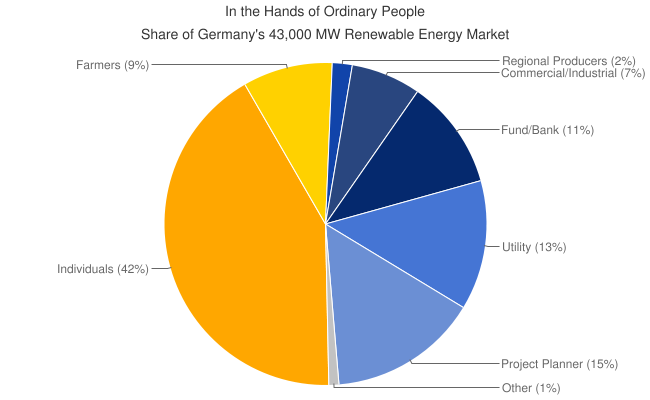Distributed renewable energy comes in small bites, but it makes mouthfuls — gigawatts — of renewable energy capacity. Americans tend think big, but it is countries that built small that are hitting big renewable energy targets.
Take Germany. In 2009, it installed 3,000 megawatts (MW) of solar PV, more than three times all the solar PV installed in the U.S., ever. Over 80 percent was installed on rooftops.
Distributed wind power scales, as well.
Of Germany’s 27,000 megawatts of wind power projects (third most in the world and most per capita), nearly 90 percent are smaller than 20 megawatts, with most between 1 and 5 megawatts.

The small projects are also a significant portion of total capacity, with 20 MW and under wind projects contributing half of total wind power capacity.

Germany’s clean energy policy doesn’t just make mountains out of molehill-sized distributed wind and solar projects, it spreads the economic benefits around. Over half of the country’s 43,000 MW of renewable power are owned by individuals or farmers. The chart is from Germany’s Renewable Energy Agency (terms translated by Google):

There’s nothing inherently wrong with seeking big numbers for renewable energy, but it’s shortsighted to assume that only big projects add up. And American policy for renewable energy can do more and get more with a focus on distributed energy.



